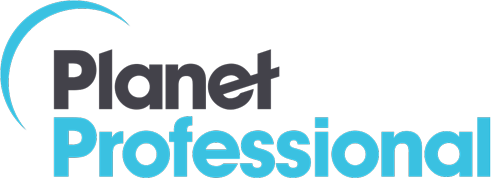Signs of a Strengthening Economy
As recruiters, we have an interesting perspective when it comes to the economy. Usually preceding a recession, we see a gradual pulling back in hiring or an unwillingness to bring on new staff. The pandemic – or more accurately its impact on the economy – was similar although accelerated in many ways, as once-booming industries like hospitality, entertainment and transportation came to a sudden halt. Being on the front lines of the labor market, we also see the reverse – indicators of growth, recovery and stabilization. And while we don’t have a crystal ball, we are seeing some definite signs of a strengthening economy.
More Jobs, Especially Temporary and Contract Roles
Overall, we’re happy to report that after a few slower months in the beginning of the pandemic, we are seeing a definite, sustained uptick in business. The unemployment rate has stabilized and is predicted to decrease as more vaccines are available and more people go back to work. As a result, more clients are reaching out and asking our help to find candidates.
During the pandemic, many companies were understandably nervous about hiring permanent employees. They didn’t know how impacted their industry or business would be, or what their revenue or budgets would look like in the next six to 12 months. As a result, we were seeing an increase in requests for part-time and contract labor.
Within the last several months, however, we have seen an influx of organizations looking for permanent and contract-to-hire full-time positions. Similarly, businesses across a wide variety of industries are once again bringing on contract labor to support long-term growth projects and not just to help with gaps in coverage.
The Types of Roles that Indicate a Strengthening Economy
Not only does the pace of hiring indicate a strengthening economy, but so do the types of positions that rebound as a result.
And, we’re seeing those.
As businesses grow, so does their need for more back-office personnel (Planet Professional’s specialty). The more people you’ve got doing your revenue-generating functions, the more people you’re going to need in your administrative functions as well.
An example: We have seen an increase in temporary Accounting, A/P and Billing positions across many industries. This is a good sign as more billing means more business, which in turn strains the bandwidth of an accounting team, resulting in the need for extra hands.
We’re also seeing a resurgence in the hiring of Human Resources and Recruiting positions. When a company is willing to hire an HR role it’s indicative that they are again increasing headcount. Recruiting positions, whether contract or permanent, are a direct indication that an organization is growing or looking to rebuild. Businesses don’t bring on staff to hire for other positions unless they are invested in growing and building their company.
Interestingly, some of the Covid-centered positions we were seeing in the past few months like Temperature Screeners and general cleaners are still in demand as companies continue to be cautious about their work environments.
Budgets and Watchful Spending
We’re not saying that hiring has returned to pre-pandemic levels or that it’s open season for increasing headcount. But, budgets are once again being approved as witnessed by the need for Recruiters and the reopening of hiring.
With that said, though, there is a continued sensitivity around spend. When unemployment was at 3%, a client would call with an immediate need, and depending on the position, cost was often not an issue. Now, they still need someone “by tomorrow,” but many have a clear number they can’t go beyond.
Conversely, there are several industries that have remained consistently in high-growth mode throughout the past year and where budgets have been less tight, including consumer-facing products and services, large non-profits, technology, software and life sciences.
Flexibility in Work Arrangements
Another interesting shift is where the work will take place long term. Some jobs, of course, must be on-site, like in a warehouse or nursing facility. Before the pandemic, most companies would insist on employees working in the office, at least much of the time. “Working from home” was a perk that many organizations weren’t willing to offer to all staff and usually, not to contractors at all. Now it’s always part of the discussion.
We routinely ask the employer if a new hire needs to be in the office and if yes, for how many days a week. Additionally, for positions that start remotely, we discuss whether or not the employee will need to move to an office in the future either full or part time. As organizations have worked out the kinks in their remote processes, it’s become the norm for all employees to be offered flexible arrangements, at least for the immediate future, even with temporary roles.
As we know, many tech companies already had work-from-home friendly policies. Now, instead of requiring staff to come into the office two days a week, they’re offering full remote working arrangements. This is good for the company as well as the worker. Now they can recruit talent from a wider geographical area, and we are seeing this trend happening more and more often with more progressive companies. However, if the employee needs to interact with a team, or is in a leadership position, the preference is still to hire someone local to the office or at least in the same time zone.
Looking Forward
Even with the market uncertainty caused by Covid-19, there are certain signs of a strengthening economy. These include how many industries are busy and in need of workers. But it may require job seekers to look for opportunities in new places, and accept that for the meantime, contract and temp work may be the best option.
Read more about other current hiring trends here.
Photo credit: Canva
Contracting | Hiring trends | Working with recruiters | Workplace



